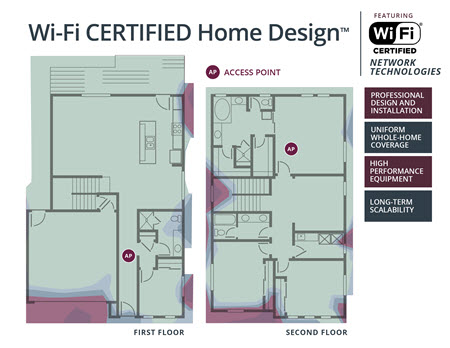Home Builders Eye Designs Optimized for WiFi

It used to be common for some homebuilders to weave in a network of Category 5 (or 6) wiring during the internet’s initial wired heyday, but now they’ve turned their focus to designs that are optimized for WiFi.
Taking the lead on that front is the Wi-Fi Alliance, which launched a certification program in June for professionally designed, preinstalled WiFi networks in new homes.
That program, called Wi-Fi Certified Home Design, spells out design practices for planning and installing WiFi networks in a manner that provides consistent coverage throughout the home for core broadband services, as well as for smart home appliances such as thermostats and speakers and other components for the grander Internet of Things sector.
Related: Whole-Home WiFi Heats Up
Lennar is the first major U.S. homebuilder on board with the new program, which will include access points and other WiFi elements that meet up with certain specifications and performance requirements alongside guidelines on home network design.
The Wi-Fi Alliance will certify the devices, but it will be up to builders to pick and choose the products to be implemented into the network design.
“This was a builder-inspired initiative,” Randy Ryder, marketing and business development manager at the Wi-Fi Alliance, said, noting that WiFi coverage is becoming more important as homes get larger and more devices are connected to the network.
The whole-home concept is also expanding beyond the physical home, to support “usable coverage” in areas such as patios and yards, Ryder said, adding, “This provides a turnkey solution that, up until now, has been a DIY effort for a new home owner.”
CableLabs, the industry’s research-and-development organization, participated in the certification program initiative, knowing that cable’s role in providing broadband coverage doesn’t end at the modem. “It’s a great benefit to the cable industry and, frankly, to any other ISP because [access point] placement in the home causes any number of service calls or just a poor quality of experience for the customers,” CableLabs lead architect for wireless Josh Redmore said.
The smarter way to stay on top of the multichannel video marketplace. Sign up below.
